AWS Certified Developer - Associate
AWS Fundamentals
AWS CloudFormation
In this article, we explore AWS CloudFormation and its revolutionary approach to provisioning infrastructure in the cloud.
Traditionally, infrastructures were set up using a combination of scripts and manual processes recorded in runbooks or stored in version control systems. This conventional method often resulted in inconsistencies, unreliable deployments, and non-repeatable processes—especially when scripts or runbooks were not kept up to date.
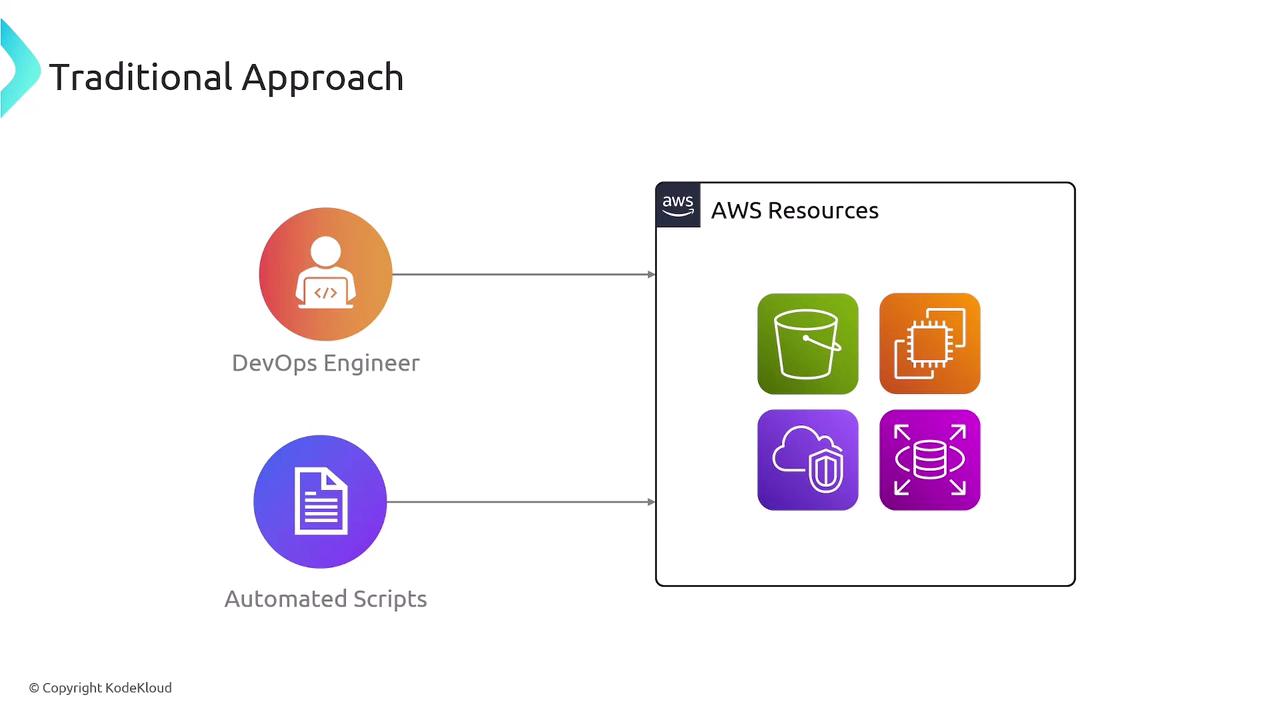
Infrastructure as Code (IaC) is a key DevOps practice that addresses these issues by provisioning and managing infrastructure using code instead of manual methods. Think of it as building a structure: just as architects and construction teams use blueprints and standardized tools to construct a building, DevOps engineers use code as blueprints to set up servers, databases, networks, and other infrastructure components. This code, which is version-controlled and reusable, is executed by IaC tools like Terraform or AWS CloudFormation to automatically create, configure, and interconnect resources.
AWS CloudFormation is a powerful service that allows you to model, provision, and manage AWS resources efficiently. By using a CloudFormation template, you describe all the resources you need—such as EC2 instances, RDS databases, VPCs, subnets, and more—and let the service handle their provisioning and configuration.
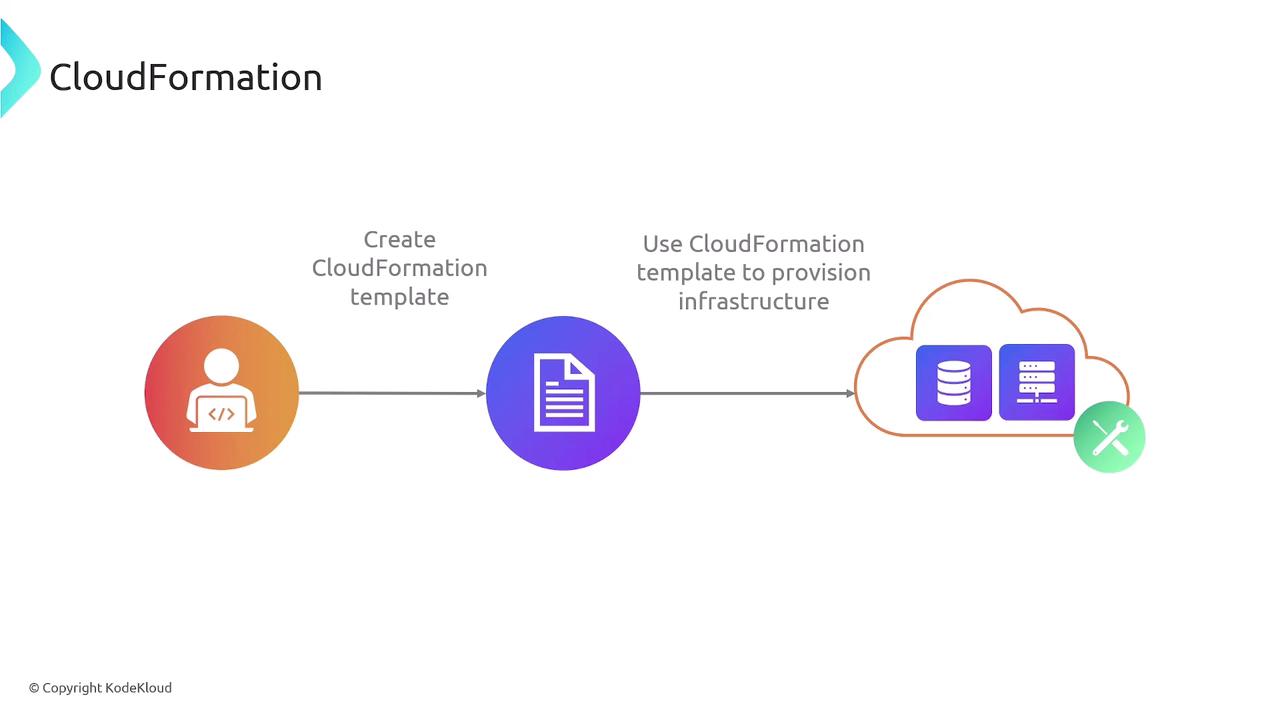
When you define resources in a CloudFormation template, you group them into a "stack." A stack is a logical unit of AWS resources that you can create, update, or delete as one entity. This grouping lets you organize resources by application, environment (development, staging, or production), or any other logical categorization. Once the stack is created, CloudFormation provisions all the resources it contains.
As your infrastructure evolves, changes such as adding new resources or modifying existing ones may be necessary. To implement these changes, you simply update your CloudFormation template and submit the revised version to the service. AWS CloudFormation then generates a change set—a preview that outlines which resources will be added, removed, or modified—allowing you to review the impact of your proposed changes before they are applied.
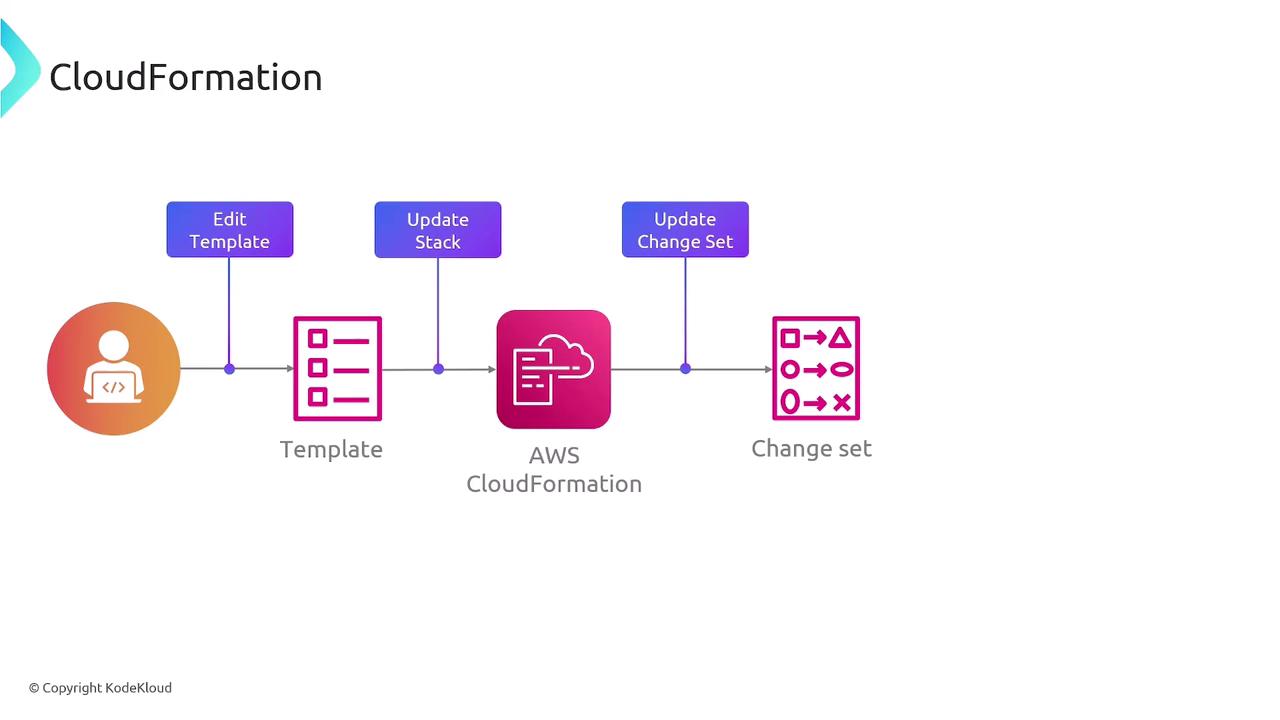
Key Features and Benefits
- Infrastructure as Code: Define, document, and version-control your infrastructure using code. This provides a clear change history and the ability to roll back if necessary.
- Consistent and Repeatable Deployments: Reuse the same configurations across different environments, ensuring consistent and reliable deployments.
- Version Control Integration: Store your infrastructure templates in version control systems like Git or GitHub, which helps track changes and simplifies rollbacks.
- Resource Tracking and Management: With CloudFormation, all resources are grouped into stacks, enabling simple tracking, updating, or removal as a unit.
- Time and Cost Efficiency: Automation through code reduces manual configuration and accelerates the provisioning process while minimizing human error.
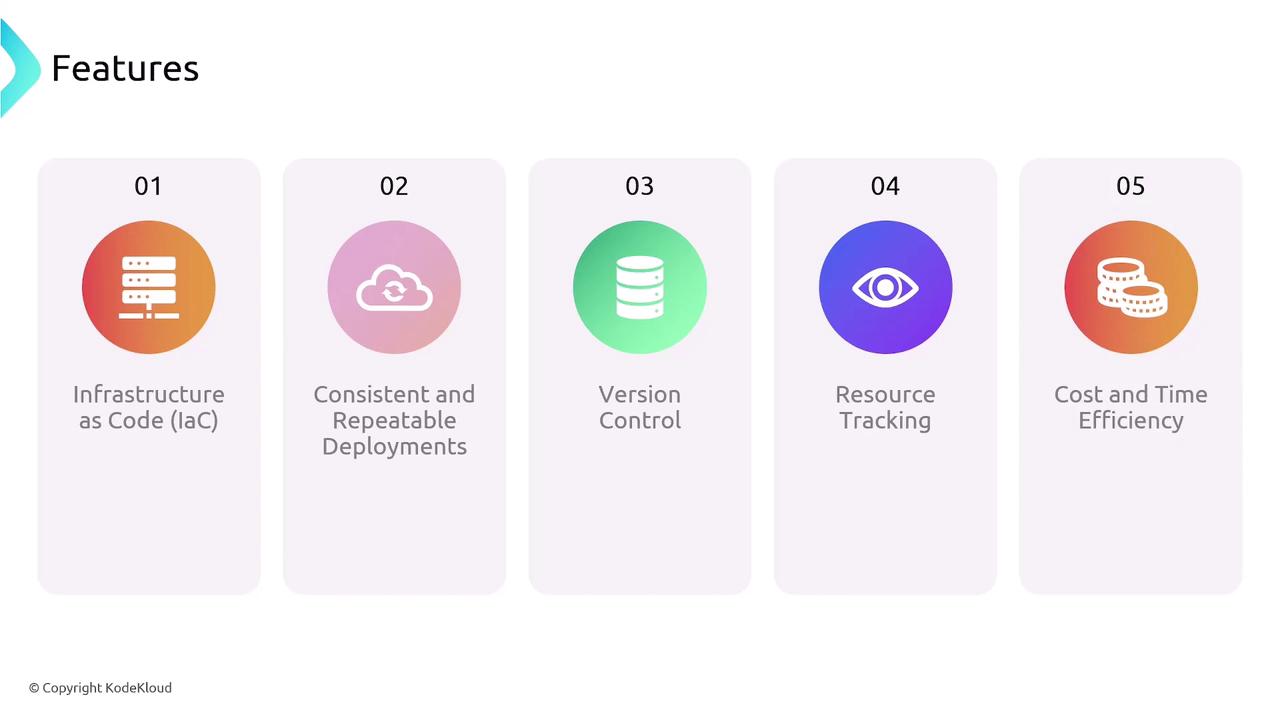
Tip
Integrate CloudFormation with other AWS services such as CodeCommit, CodePipeline, and CodeBuild to set up CI/CD pipelines that automate deployments and updates for your infrastructure.
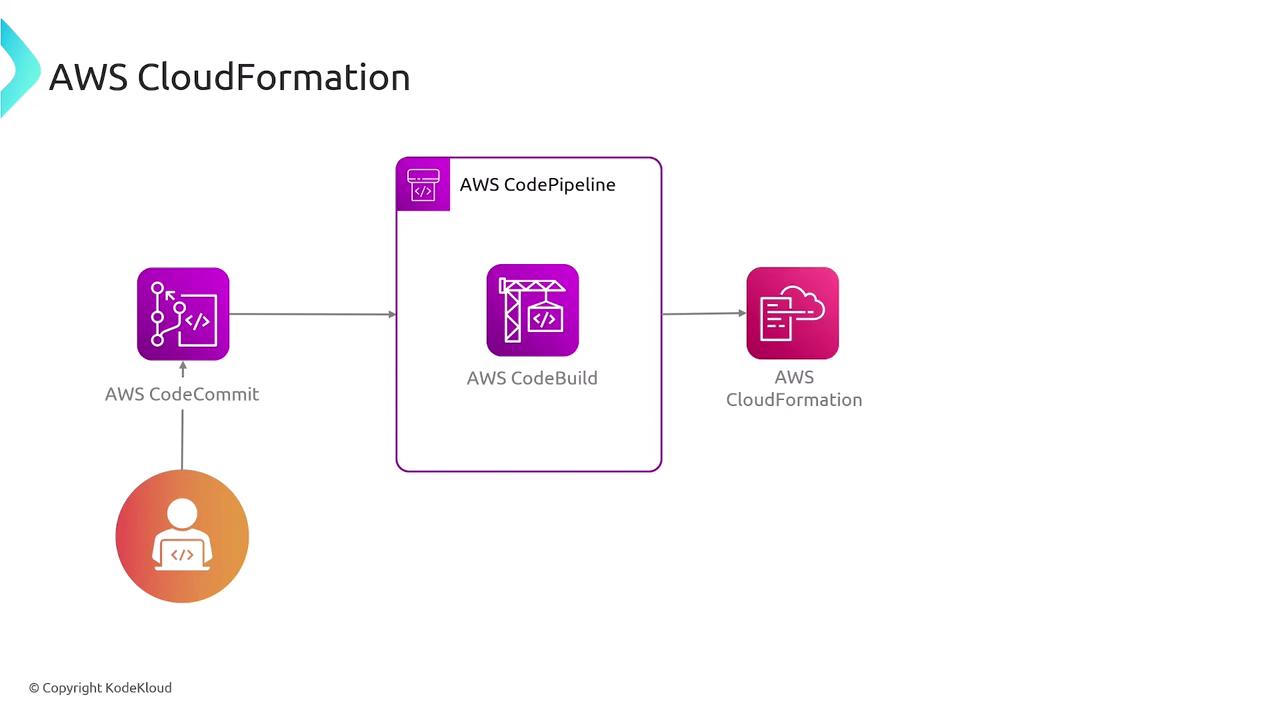
In summary, AWS CloudFormation simplifies and streamlines infrastructure management by converting manual processes into code-driven, repeatable, and scalable solutions. This transformation paves the way for efficient, reliable, and agile deployments in the cloud.
Watch Video
Watch video content